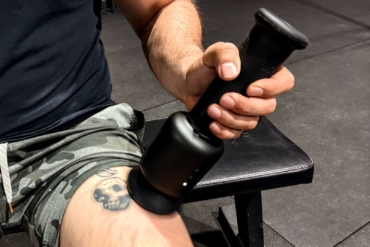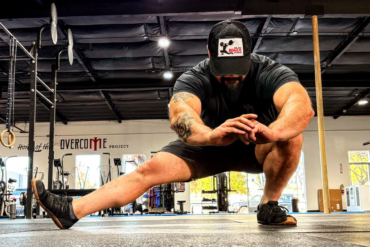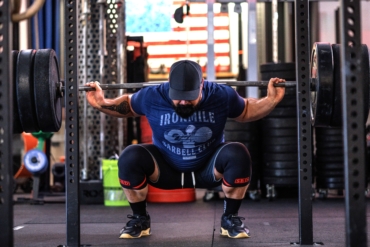Whether you’re at the gym or buying weights for home fitness, it’s important to know the differences between kettlebells and dumbbells. Here’s how to know which is right for you.
A lot of people love working out with free weights. Because of their instability, free weights demand a more complete body workout than weight machines.
However, between kettlebells and dumbbells, you may wonder which you should be using. Their designs make them better — or worse — for certain exercises. And your personal fitness goals will help you decide which is best suited to your needs.
Kettlebells vs. Dumbbells
Handle Design
To understand how kettlebells and dumbbells differ in use, we first need to go over how they differ in design. Kettlebells are constructed with the weight below the handle and centered in one area. Plus, the handles have enough space for you to grab them with both hands.
In contrast, dumbbells have a handle only large enough for one hand. The weight is displaced evenly on either side of the handle and sits at the same level as your hand. You likely already knew this, as these are differences you can see. You’ll find, though, that what seem like small details make a huge impact on how you use them.
Weight Location
The relationship between the weight and the handle is important because it affects how your body reacts to the weight.
In kettlebells, the weight sits behind your wrist and creates a slight torque in your joints. This is important to keep in mind if you’ve injured your wrist or elbow. The slight bend from kettlebells can exacerbate ongoing tendonitis or carpal tunnel in ways that wouldn’t happen with dumbbells. On the other hand, if you’re interested in building wrist and grip strength, a kettlebell is a great way to do so.
Because the weight of a dumbbell sits at your palm, you can maneuver them with a straight wrist throughout. This will also produce a more even and constant force when you’re lifting. While the difference is slight, some fitness fanatics may find this relevant for their specific goals.

Power: Kettlebell Swing
Another big difference between kettlebells and dumbbells is that the location of the weight affects the movement and power you can generate with them.
If you’ve used a kettlebell before, you know they’re great for swinging. There are a lot of dynamic exercises you can do with kettlebells that involve your ability to create and stop momentum. Kettlebell swings are a particularly popular exercise because the moving center of gravity activates your core as well as the intended shoulder and arm muscles.
These exercises simply don’t work as well with dumbbells, where the weight is always right at your hand. Therefore, if you’re aiming for explosive power, kettlebells are a better option.

Static Weight Training
Dumbbells, on the other hand, are preferable for static weightlifting. The center handle allows you to control the location of the weight better, which may be important for certain exercises. It’s also easier to progressively increase the weight with dumbbells, as fewer muscles are involved.
It’s true that if you want to isolate a single muscle, a weight machine is probably your best bet. But if you want to isolate a muscle group or do a multi-joint exercise that targets muscles in separate areas of your body, dumbbells are the way to go. For such static exercises, dumbbells are preferable to kettlebells.

Cardio Exercises
If you’re focusing on a cardio workout, both weights work fine for cardio exercises. Cardio exercises tend to use lighter weights and longer reps. The lighter the weight, the less you’ll notice these slight differences in feel between kettlebells and dumbbells.
However, in high-intensity interval training (HIIT), you may find kettlebells are slightly easier to pick up and use. The wider handle makes it easy to grab a kettlebell quickly and with both hands if the exercise requires it. The momentum kettlebells generate (as discussed above) can help keep you going and moving to the next HIIT activity.

Final Considerations
Lastly, as mentioned above, the weight location of kettlebells makes them slightly more challenging to use. Because the added weight isn’t right at your hand, kettlebells throw off your center of gravity.
If you’re looking for an added challenge, this may be it. If you don’t want to continually increase your weight, using dumbbells can start to get boring after a while. Kettlebells are a great way to bring a new element into your free weight exercises. Switching out dumbbells for kettlebells in your normal routine will engage your core and snap your muscles out of autopilot.
However, if you’re new to weightlifting, it’s probably safest to stick with dumbbells, at least at first. The same design that makes kettlebells more exciting to use also makes them more dangerous. If you don’t know how to use them properly, it’s possible to tweak your wrist and hurt yourself.
In general, dumbbells are easier and safer to use for beginners. They’re easier to control and maintain a straight wrist while gripping. Some new weightlifters may also find it easier to feel the isolated muscles and understand the exercises better with dumbbells.
If you do choose to give kettlebells a try, make sure to focus on your form for the first few weeks. Don’t increase the weight until you feel confident and comfortable using them.






